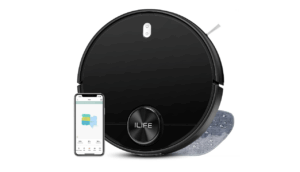New Algorithm for QoS-Aware Routing in IoT Sensor Networks

A recent research article in the Journal of Engineering and Applied Science presents an improved optimization approach for routing in wireless sensor networks (WSN) within IoT scenarios. The Enhanced Archimedes Optimization Algorithm (EAOA) aims to save energy, reduce delays, and extend network lifetime. The authors report better results compared to conventional methods, but note that the findings are based solely on simulations. Practical tests on real hardware are planned but have not yet been carried out.
WSNs form the backbone of many IoT applications. Small, often battery-powered nodes measure environmental or process data and transmit it wirelessly. Limited energy resources make efficient routing essential; otherwise, nodes fail early, communication paths break, data is lost, and latency increases. Good routing decisions are therefore crucial for the usability and longevity of such networks.
Problem: Metaheuristics with known limitations
Many established optimization algorithms only find partial or local solutions or converge too slowly. As a result, nodes are used unevenly, energy is wasted, and network lifetimes are shortened. This issue is particularly relevant in dynamic networks with many nodes and changing conditions, as is typical for IoT environments.
The proposed approach: EAOA with LEO and OL
EAOA extends the Archimedes Optimization Algorithm (AOA) with two additional components: the Local Escape Operator (LEO), which helps the algorithm escape local optima, and Orthogonal Learning (OL), which balances the exploration of new solutions with the refinement of promising ones. The goal is faster and more stable discovery of energy-efficient routes with low computational overhead — suitable for resource-constrained IoT nodes.
Results: Advantages in simulations, no hardware validation
In the reported simulations, EAOA outperformed various comparative methods in terms of energy consumption, delay, throughput, and estimated network lifetime. The paper attributes these improvements to the combination of LEO and OL. Importantly, the authors explicitly identify the findings as simulation results and outline as next steps testing on NS-3 and Cooja, as well as trials on development boards such as Zolertia Z1 and TelosB motes.
Practical relevance
If the simulated effects can be replicated on real testbeds, EAOA could be valuable for widely distributed, low-maintenance IoT networks. Longer runtimes would reduce service intervals, lower operating costs, and improve data availability. However, validation is still missing under real-world conditions such as radio interference, realistic energy models, memory and CPU limitations, and heterogeneous hardware. The benefits therefore remain theoretical at this stage.
Source
Liu, N., Ji, Y., Wang, K. et al. Enhanced Archimedes optimization algorithm for quality of service-aware routing in internet of things-enabled wireless sensor networks. Journal of Engineering and Applied Science 72, 176 (2025).
https://doi.org/10.1186/s44147-025-00761-2

















